Occupational environment monitoring at the factory producing containers
99,000 ₫
Note: The above price is calculated for one sample, the price may fluctuate depending on the area of the environment to be monitored and the movement of the market. For more accurate price support, please refer to the quotation table or contact directly with our consulting staff.
Environmental monitoring of container manufacturing factories is a session of collecting, analyzing, and evaluating factors in the workplace that may be harmful to the health of workers.
Table of Contents
Toggle1. Overview of Container Manufacturing Factory
a. What is a Container Manufacturing Factory?
A manufacturing factory for containers is an industrial facility specialized in the production and assembly of container units, also called containers or “conts”, used for transporting goods and temporary packaging during transit. Containers are typically made of steel and are designed to withstand harsh environmental conditions and transportation by road, sea, and air.

b. Production stages in a Container Manufacturing Factory
In a container manufacturing factory, the production and assembly stages typically include:
- Steel cutting and bending: Steel is cut into parts and then bent according to specific molds and dimensions to form the steel panels of the container.
- Welding: Steel panels are welded together to form the main frame of the container. The primary welding technologies used are electric welding or spot welding.
- Attaching components: Components such as doors, locks, bumpers, container frames, and other accessories are attached to the main frame to complete the container structure.
- Painting and finishing: After the structure is completed, the container is painted and surface-finished to enhance aesthetics and protect against environmental effects.
- Inspection and packaging: Each container undergoes quality and safety inspections to ensure compliance with standards and regulations. Then, containers are packaged and prepared for transport to the point of use.

c. Machinery used in Container Manufacturing Factories
Container manufacturing factories utilize various types of machinery and equipment to carry out production and assembly stages. Common machinery includes:
- Steel cutting machine: Used to cut steel parts to the required size and shape for container assembly.
- Steel bending machine: Used to bend steel panels into shapes suitable for container components.
- Welding machine: Used to weld steel panels together to form the main container frame. Electric or spot welding machines are commonly used.
- Accessory cutting and processing machines: To produce parts like doors, locks, bumpers, and other accessories, cutting, drilling, bending, and processing machines are used for materials such as steel, plastic, rubber, and composite materials.
- Painting machine: Used to paint the surface of parts and the main frame of containers. Spraying or other painting methods may be used.
- Lifting equipment: Cranes, forklifts, and conveyor systems are used to move and transport parts and finished products during production and assembly.
- Inspection and measuring devices: Equipment like steel thickness gauges, strength testers, and dimensional measurement machines ensure products meet technical specifications and quality standards.
- Support machinery and tools: Other support equipment includes air compressors, generators, plasma cutting machines, grinders, and hand tools to aid the production and assembly process.

d. Occupational diseases for workers in Container Manufacturing Factories
Workers in container manufacturing factories may be exposed to several occupational diseases, including:
- Respiratory diseases: Exposure to dust and metal fumes during cutting, welding, and metal processing can cause pneumonia, bronchitis, asthma, and other respiratory issues.
- Skin diseases: Contact with chemicals, oils, and irritants can cause dermatitis, eczema, and skin infections.
- Hearing disorders: High noise levels from machinery can lead to hearing loss and tinnitus.
- Spinal and musculoskeletal disorders: Handling and lifting heavy products can strain the spine and joints, causing conditions such as vertebral degeneration, arthritis, and back pain.
- Injuries: Work involving cutting, welding, and lifting tools carries risks of cuts, burns, collisions, or crushing accidents.
To prevent occupational diseases, container manufacturing factories must implement protective measures, including providing personal protective equipment, labor safety training, maintaining safe work procedures, and controlling the working environment to minimize exposure to harmful agents.

e. Common types of containers on the market
Common types of containers include:
- General cargo containers: Used for transporting goods by sea and road. Standard sizes include 20 feet (6.1m), 40 feet (12.2m), and 45 feet (13.7m), suitable for various types of cargo.
- Refrigerated containers: Also called Reefer containers, designed for temperature-sensitive goods such as fresh food, pharmaceuticals, and frozen items, with built-in cooling systems to maintain storage and transportation conditions.
- Side-door containers: Containers with doors on one or both ends for easy access to goods from either side, commonly used for fast-moving cargo requiring flexible access.
- Fuel containers: Used to transport fuel like gasoline, diesel, or gas safely, designed to prevent leaks during transport.
- Open-top containers: Containers that can be expanded or have parts removed, suitable for temporary construction, mobile offices, or storage. They offer flexibility and convenience in space usage.
2. Overview of Occupational Environment Monitoring Services
a. What is occupational environment monitoring in Container Manufacturing Factories?
Occupational environment monitoring (or workplace environmental measurement) in container manufacturing factories involves collecting, evaluating, and analyzing environmental indicators to implement timely measures, reduce harmful effects on workers’ health, and prevent occupational diseases. Monitoring is mandatory for all container manufacturing factories.
It is crucial in protecting and improving worker health, as employees are the primary resource generating profit. Continuous exposure to hazardous factors exceeding allowable limits may adversely affect health and lead to occupational diseases.
REGISTER FOR OCCUPATIONAL ENVIRONMENT MONITORING SERVICE
b. Nam Viet’s occupational environment monitoring program
Nam Viet’s program is designed by occupational safety and environmental monitoring engineers. Its goal is to ensure worker health and safety using modern methods to monitor air quality, water, microclimate, physical factors, dust, and other workplace elements. This program is crucial for maintaining a safe working environment and protecting workers’ health.
Additionally, it helps research and develop solutions to improve workplace conditions. With the dedication and professionalism of Nam Viet’s monitoring experts, the proprietary program represents a breakthrough in occupational safety and environmental management in Vietnam.

c. Standardization in occupational environment measurement
Standardization ensures accurate and reliable measurements. The program follows recognized standards and procedures from Ho Chi Minh City Department of Health. This guarantees data reliability for evaluating workplace conditions and making informed decisions to protect worker health.
Standardization also ensures measurements are performed by highly qualified monitoring specialists with years of experience, allowing managers and experts to trust the results for occupational safety and environmental decisions.
Applying standardization demonstrates Nam Viet’s commitment to a safe work environment and contributes to improving occupational safety management in Vietnam.
d. Reporting results of occupational environment monitoring in Container Manufacturing Factories
Monitoring results are prepared according to Form No. 04, Appendix III, Decree 44/2016/ND-CP in two copies: one sent to the workplace contracting monitoring services, and one retained by the monitoring organization.
Legal retention is indefinite.

e. Frequency of occupational environment monitoring according to law
According to Clause 2, Article 18 of Law on Occupational Safety and Hygiene 84/2015/QH13, employers must monitor harmful factors at least once a year.
f. Deadline for submitting monitoring reports according to law
Reports must be submitted before December 31 each year to the local Department of Health where the enterprise’s headquarters and employees are located.
When changes occur in technology, production processes, or workplace upgrades that introduce new hazards, employers must update occupational hygiene records with relevant monitoring data.
g. Penalties for violations regarding occupational environment monitoring for employers
According to Article 27 of Decree No. 12/2022/ND-CP dated January 17, 2022:
- Clause 2: Fine from 2,000,000 – 5,000,000 VND for not publicly announcing monitoring results to employees at the monitored workplace immediately after obtaining the results.
- Clause 3: Fine from 20,000,000 – 40,000,000 VND for failing to conduct environmental monitoring to control health hazards.
- Clause 4: Fine from 40,000,000 – 60,000,000 VND for collaborating with monitoring organizations to commit fraud in monitoring activities, without reaching criminal liability.
3. Harmful Environmental Factors for Workers in Container Manufacturing Factories
Harmful environmental factors in container manufacturing factories may include:
- Noise: The container manufacturing process often involves noise from machinery, equipment, and processing. Continuous and high levels of noise can negatively affect workers’ health, causing fatigue, stress, and potentially leading to hearing problems.
- Dust and fine particles: Cutting, welding, grinding, and metal processing in container factories can generate metal dust and fine particles. Exposure to and inhalation of these particles can irritate the respiratory system and cause health issues such as pneumonia, allergies, and other respiratory problems.
- Chemicals: During painting, coating, rust prevention, and surface treatment, container factories use chemicals such as paints, solvents, rust removers, and coatings. Contact with these chemicals can irritate the skin, eyes, and respiratory system, and may cause serious health issues if safety procedures and protective measures are not followed.
- Temperature and humidity: The container production process may occur in environments with high temperature and humidity. Working in excessively hot or humid conditions can cause fatigue, discomfort, and health problems such as headaches, dehydration, and reduced work performance.
- Physical impacts: During production, there may be risks of collisions, falling heavy objects, or contact with materials and tools. These physical impacts can cause injuries, scratches, fractures, and other occupational safety issues.
REGISTER FOR OCCUPATIONAL ENVIRONMENT MONITORING SERVICE
4. Measures to Improve the Working Environment in Container Manufacturing Factories
To improve the working environment in container manufacturing factories, the following measures can be applied:
- Noise management: Use soundproofing and thermal insulation measures and provide ear protection for workers in high-noise areas. Additionally, design and maintain machinery to reduce noise at the source.
- Dust and fine particle management: Implement effective dust extraction systems and maintain workplace hygiene to reduce dust and fine particles during production. Provide protective equipment such as masks, safety goggles, and dust-resistant clothing to protect workers’ health.
- Chemical management: Strictly comply with safety regulations when using chemicals, ensuring safe storage, transportation, and handling. Train workers on proper use of protective equipment and ensure effective ventilation systems.
- Temperature and humidity adjustment: Ensure that air conditioning and humidity control systems work properly to create a comfortable and safe working environment. Provide protective measures such as fans, heaters, air purifiers, and personal protective equipment to minimize environmental impacts.
- Occupational safety management: Comply with labor safety regulations, provide adequate protective equipment, and train employees on safe working procedures and proper use of tools and equipment.
- Regular monitoring and inspection: Conduct periodic checks of the working environment, including air quality, noise, and other environmental factors, to ensure compliance with safety regulations and protect workers’ health.
- Training and awareness raising: Provide training on occupational safety, environmental management, and health for workers to raise awareness of risks and protective measures during work.
- Promoting a safety culture: Build a safety culture within the factory, encourage workers to adopt personal health protection measures, and contribute to improving the overall working environment.
- Periodically conduct occupational environment monitoring in factories, collecting and analyzing harmful factors to workers and adjusting to reduce risks to prevent occupational diseases.
5. Benefits of Periodic Monitoring of Container Manufacturing Factories
An Toan Nam Viet provides your business with excellent benefits when using occupational environment monitoring services as stipulated in Decree 44/2016/ND-CP on managing and controlling harmful factors in the working environment affecting workers.
- Your business can proactively control harmful factors in workshops or factories.
- Receive recommendations for measures to reduce harmful factors and improve workplace environment quality.
- Indirectly protect human resources, the key factor in the enterprise’s development.
- Minimize the impact of occupational diseases on workers’ health, reducing future treatment costs.
- Improved worker health leads to better product quality and consistent production output.
- Comply with labor safety laws and avoid legal risks.
- Create credibility and professionalism in all aspects, enhancing your business brand.
Nam Viet’s environmental monitoring service is a solution to reduce the harmful effects of occupational diseases, contributing to a healthy and high-quality working environment.

6. National Occupational Environment Monitoring Center
The National Occupational Environment Monitoring Center of Nam Viet is a professional unit specializing in supervising and measuring workplace environmental quality across all provinces in Vietnam. With an experienced team of monitoring specialists, the center uses modern measuring equipment to ensure accuracy and reliability.
In addition to monitoring services, the center also assists clients with planning, handling, and tracking occupational environment issues. With the motto “Customer-Centric,” the center prioritizes customer satisfaction, meeting all customer needs, and is committed to providing the best solutions for businesses.
REGISTER FOR OCCUPATIONAL ENVIRONMENT MONITORING SERVICE
With investments in technology, equipment, and human resources, Nam Viet’s monitoring center has become one of the most reputable units in occupational environment monitoring in Ho Chi Minh City with the following objectives:
- We always value our brand reputation and the quality of our service products.
- We provide clients with the best and most suitable solutions possible.
- With a team of experienced Masters and Engineers aiming to protect the environment and benefit businesses.
- By choosing Nam Viet Environmental Monitoring, your company will receive professional service from experts in the monitoring field, along with the best cost benefits.
The occupational environment monitoring process at Nam Viet includes the following basic steps:
- Before conducting occupational environment monitoring, we ensure that machinery and equipment are adjusted and calibrated according to legal regulations.
- Carry out the monitoring process in full compliance with the commitment to the Department of Health.
- Report monitoring results honestly to the employer.
- If monitoring results indicate unsafe conditions for workers, Nam Viet will provide solutions and the workplace will implement the following:
- Implement measures to improve working conditions to minimize harmful impacts and prevent occupational diseases.
- Organize health examinations to detect occupational diseases and work-related illnesses early for workers in unsafe environments.
- Provide compensation in kind for workers according to labor law regulations.

7. Occupational Environment Monitoring Quotation
To help businesses conduct occupational environment monitoring professionally and effectively, Nam Viet provides clients with a quotation for occupational environment monitoring services that is both high-quality and reasonably priced.
- Our quotation provides detailed information about the costs of monitoring services we offer, including expenses for travel, measurement, analysis, and reporting. Clients can be fully assured of the accuracy and reliability of the monitoring reports we provide.
- We are committed to offering the most competitive and reasonable prices on the market and are always ready to promptly and professionally answer any questions about monitoring services.
- With Nam Viet’s quotation, clients can easily select service packages that suit their needs. We are committed to providing the highest satisfaction with professional service quality.
No comments yet

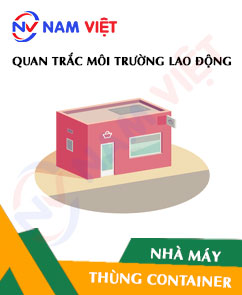
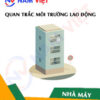
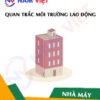
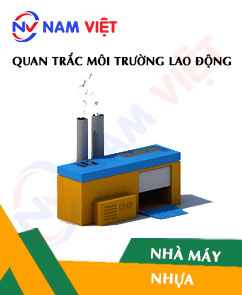


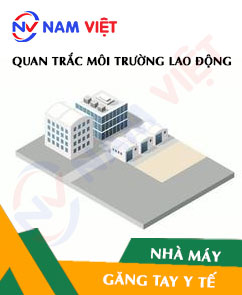




Review Occupational environment monitoring at the factory producing containers
There are no reviews yet.